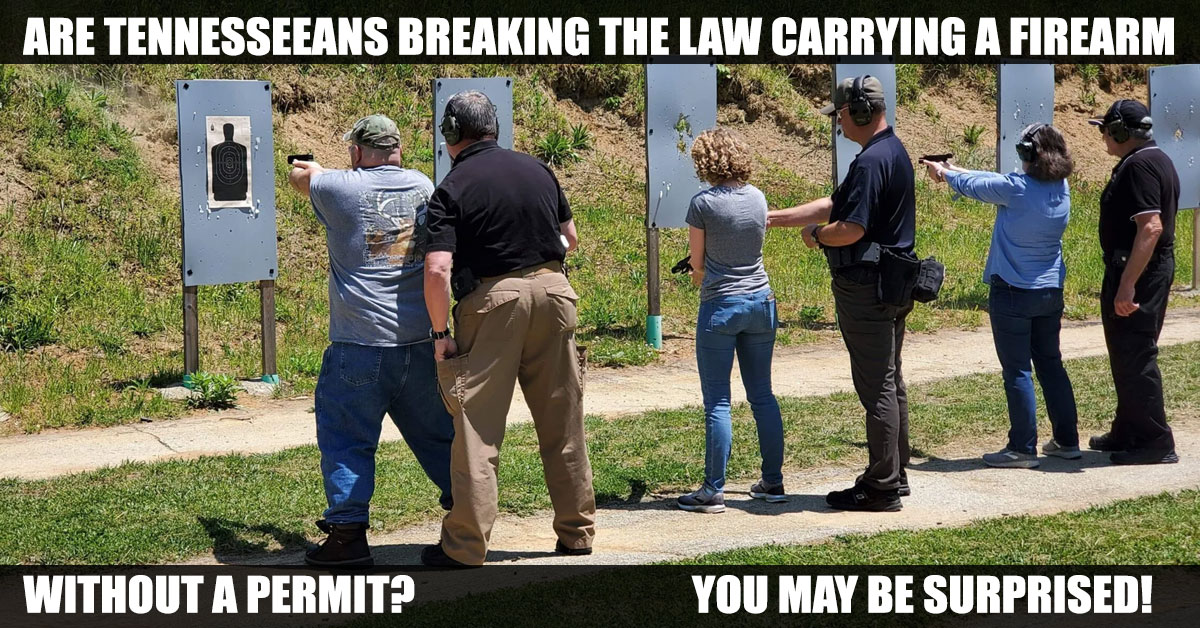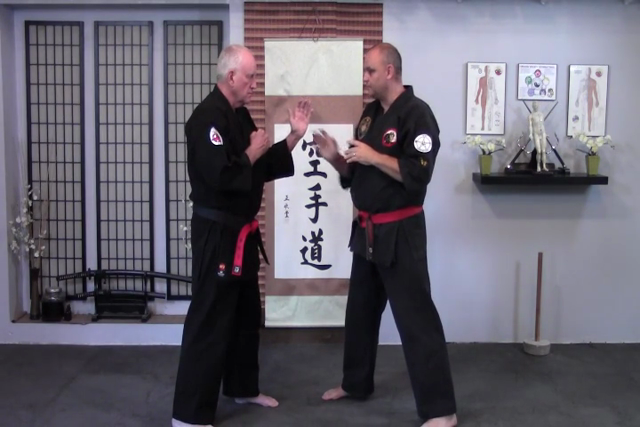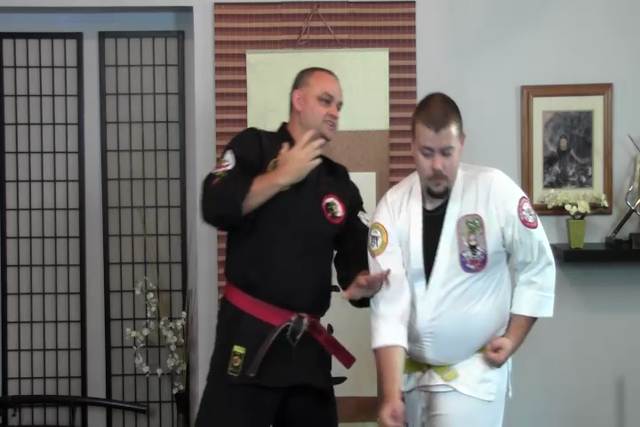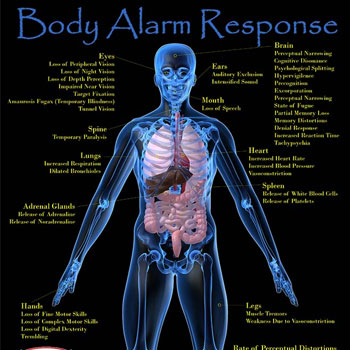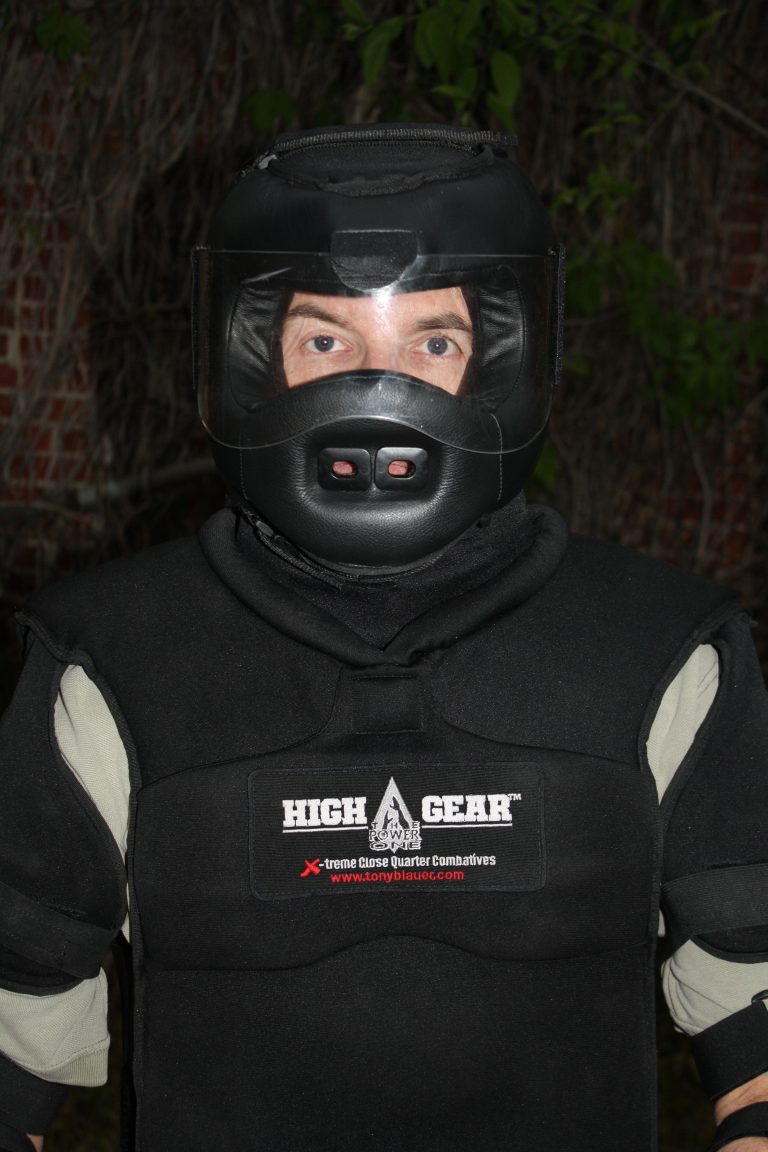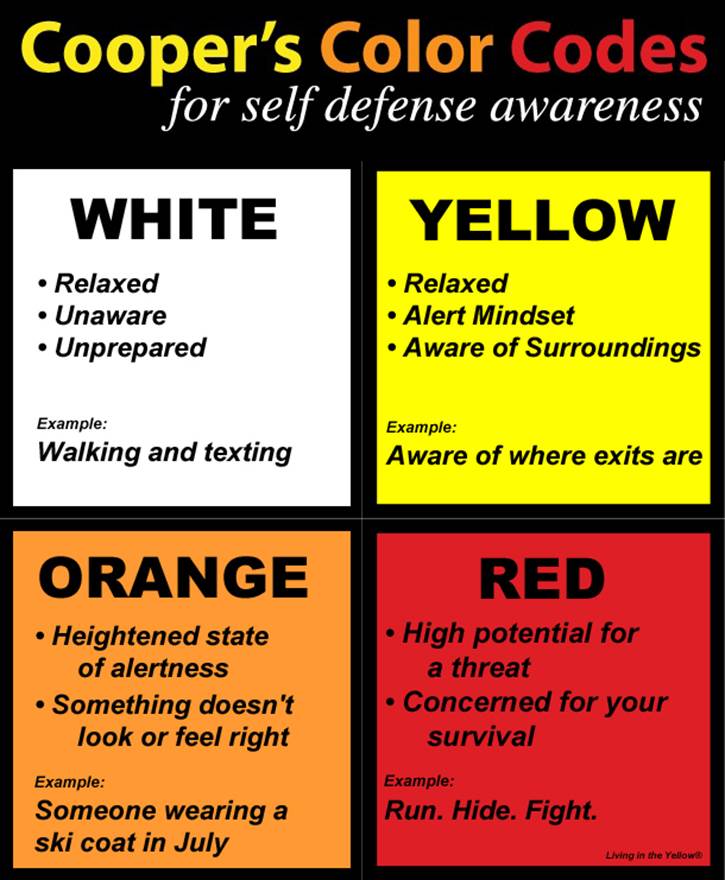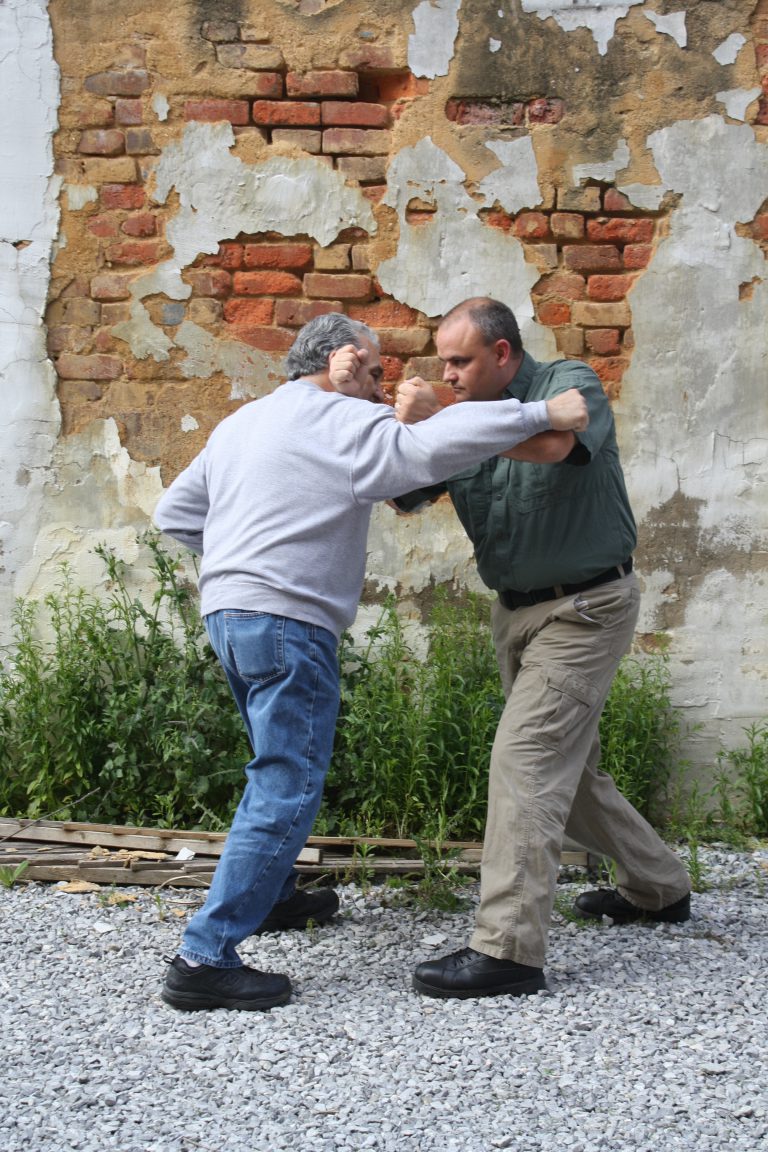What do actual gun statistics tell us about defensive use of firearms and how many lives are saved each year versus lives taken?
Continue readingWhy Tennessee Residents May be Breaking the Law Carrying a Handgun Without an Enhanced Handgun Permit
As you likely are aware, the Tennessee legislature implemented “Permit-less Carry” in Tennessee on July 1, 2021. Please educate others that this is not actually “Constitutional Carry,” which is based upon the rights afforded by the United States Constitution. Instead, it is merely Permit-less Carry. With Constitutional Carry, anyone permitted to own a firearm would be allowed to also carry one. That is simply not the case in Tennessee as the same requirements for obtaining an Enhanced Handgun Carry Permit still apply to all residents wishing to carry without a permit.
Continue readingThe Non-Reactionary Gap
I have talked previously about the Tueller Drill for firearm training. This time, we will be talking about my corollary to this drill that measures response time to an unarmed opponent striking.
For my experiment, I set up a scenario where I defined a successful response as stepping forward, making a block, and then a palm strike as a “successful” response to the attack. One might argue that this could be improved by stepping, blocking, and striking at the same time, but remember the effects of B.A.R.? This is not very likely to happen as this is a complex motor movement and those deteriorate rapidly at heart rates of around 145 BPM! So, I stand by my original assumption of breaking these into separate movements.
We measured the average response time of our defender doing these movements. More on that in a minute.
Now, we setup a target with distances in increments of six inches. We went from one foot from the target to six feet. Then, we had people wait for a stimulus (a beep) and then strike from the various distances. Response Times were charted. These numbers would be used for a hypothetical attacker.
“But wait,” you say! Response Time? Attackers are action only! And action beats reaction. Right?!??!? Well sort of!
To get Motor Time for our attacker, we subtracted their Reaction Time from their Response Time (remember the equation?). This was pure action – no reaction.
Finally, we just needed to graph the results and look at where the defender’s defensive response (react, step, block, and strike) equalled the attacker’s action time of simply stepping in and striking. Sound reasonable? This would be the time where the defender first has a chance of defending themself. At a lesser distance, the opponent’s strike would land on the defender before they had time to execute the response.
Would you like to know what that distance is? It is more than you think! Most early Martial Arts were called either “One Meter” or “Three Meter” systems. That means that the opponent was assumed to be either one meter or three away from you as the defender. As Martial Artists became more progressive in their thinking most abandoned the idea of a 3-meter system because it was too far. Sadly, this lead to a lot of bad teaching!
While it seems unreal, I found that most students needed around 4 and one-half feet to react! That is more than 1-meter but within the confines of a 3-meter system. When you understand that B.A.R. will slow you down even more, the 3-meter option sounds more likely.
Think you are faster, setup your own experiment. You may get a little better if you “pre-program” your response, perform complex movements combining all steps at once, anticipating the attack, and whatever else you can think of to try to beat the system. But, remember the goal is to try to mimic real life as closely as you can.
So, how does this help you? Knowing what your limit is on distance in order to get an effective response off in time, is just the first step; but a major one it is! You still need striking skills; anatomical targeting; and more. Those will come with the training. Hang with me.
Anything less that the 4 and 1/2 feet is what we call Non-Reactionary distance. Knowing it can save your life because you know to never let anyone get closer than this!
So, you must keep an opponent at least 4 and 1/2 feet from you no matter what! When someone invades that space, you have no choice but to open distance with them, verbally de-escalate the action, or take defensive action. There are really no other options. If you cannot calm things down or get away, striking may well be your only option. That is the tough reality. Only you can decide whether the situation warrants a physical response, and if so, at what level of force.
Now that you have an idea of what Non-Reactionary distance looks like, take another look at your training. How far do you stand from your partner when you practice? Is it within the non-reactionary distance? I bet in many cases it is. So to quote Dirty Harry, “you gotta ask yourself…Do I feel lucky?” When my life, or the life of my precious family, is on the line, I don’t want to gamble. I don’t want to take chances. I want to know how to survive.
Beating Your Adversary with Distance
If you have been reading the previous training reports, you have learned about Non-reactionary Distance. If you haven’t read them and started here…shame on you and go do your homework before reading on!
Since we know what Non-reactionary Distance is and how to measure it, it is time to put that knowledge to great use. We already learned that we must keep our opponent at least that distance away to have a chance of protecting ourselves and those around us. We also learned that the lab experiment was probably a “best case scenario” in that B.A.R. would make things worse and that distance will move further away from us.
So, how do we use this knowledge when we strike? Well, it is really simple. Remember the old logic equation of if A=B then B=A? If we cannot react fast enough within that distance, then neither can our opponent! He/she has the same limitations as we do. What is even better is that they probably are not even expecting it from us. This simple fact, will impair their cognitive processing time leading to a slower Reaction Time!
When we decide to take action, we want to make sure we are within that 4 and 1/2 feet range. The closer the better! This means that our opponent will have little to no chance of a defense and our initial strike, if done properly, is almost impossible to stop! Do you realize how important that is?
If I tell you that I can almost guarantee that you will get the first blow in on your opponent, how important would that be to you? With CombatiXâ„¢ training, that is exactly what I am saying. While nothing is ever 100% guaranteed, this is as close as it gets!
If you can learn the attack angles and proper anatomical targeting, you will be able to stop your adversary! This means that size, speed, and such, are no longer what matters most. It is knowledge. And as we say in CombatiXâ„¢, it is the application of knowledge that really matters!
You don’t have to be afraid! You don’t have to worry about what you show your smaller loved ones! This type of information practically transforms the encounter into your favor!
Body Alarm Reaction
Body Alarm Response (B.A.R.), or as some like to call it, Adrenal Stress Response, is a reality of most violent encounters. Fortunately, it can can make you stronger, decrease your cognitive processing time, protect you from bleeding too rapidly from cuts and other trauma. Unfortunately, it can also make you do the exact opposite of all of those things if not kept in check!
There are a host of physical, psychological, and perceptual distortions that can occur that you need to be prepared for. While it is beyond the scope of these reports to go into extensive detail. We do want to explore some of the most obvious ones.
Let’s start by looking at how heart rate impacts performance under stress.
As heart rate rises, it will (at first at least) improve some skills. These are primarily gross motor movements. Once the heart rate reaches about 115, you will notice that the adrenaline and noradrenaline dump into the bloodstream can improve your strength and gross motor flailing strikes. Sadly, those with little training seem to get better while those who are more “trained” tend to perform worse. How? Well, those with higher levels of training will often use more fine motor movements. How do these hold up to stress? Not well.
As heart rate increases, fine motor skills deteriorate rather rapidly. This means that if you intend to use them at all, it had better be sooner rather than later! Once you feel the adrenaline hit, it is basically too late!
In case you are wondering, let’s define some basic types of motion. There are three basic types for this discussion:
- Fine Motor – This is any movement involving the fingers and/or toes. Think small joints.
- Gross Motor – These are movements that involve the whole arm or leg. Think large limbs.
- Complex Motor – These are movements where arms or legs are doing entirely different things at the same time. Think simultaneous block and strike with arms moving in different directions doing different actions.
By the time heart rate reaches around 145, complex motor skills are becoming inceasingly difficult to perform!
At a heart rate of 175, things rapidly deteriorate in the cognitive processing realm and defending becomes increasingly difficult! And remember that heart rates of 220 in a real life-and-death struggle are not unheard of!
Of course, you have to remember that stress is a perception. Not everyone perceives stress in the same manner. What would scare one person speechless, hardly affects another. It is all based on how you perceive your level of danger and your ability to handle it.
Let’s look at the case of an individual who has extensive experience dealing with gang members, killers, and such, in prison working as a guard. Seeing these aggressive people everyday and having to deal with them would elicit less stress from them than the average person on the street. Imagine a rookie’s first time dealing with this and then imagine going back and seeing the same rookie years later. Would you expect his/her stress resposne to be lower? I would.
Perhaps you have heard about the research where students were exposed to disturbing images during a college course and their heart rate and blood pressure was monitored. In the beginning, everyone’s levels spiked! But, by the end of the course, some students showed almost no response at all to the same stimulus after being subjected to it every class! This is amazing!
So, the basic take-away from this is that the more realistic our training, the less “aroused” we will likely become to violence. Ask yourself, “Am I training so in role-playing scenarios that mimic real life aggression? Or, am I doing static practice with a freindly, smiling partner?” I think you know which will better prepare you for real life!
While you are at it, ask yourself “Do my techniques rely upon Fine Motor Skills, Complex Motor Skills, or Gross Motor Skills?” If you do an honest inventory, you may be surprised!
The first steps in CombatiXâ„¢ training is to trim the proverbial “fat” from what you do. Please understand I am not suggesting you drop your traditional Martial Arts training. Far from it. Just understand that there is a time and place for everything. If you are in a controlling situation where stress is low and you get to move first, the deteriments of stress are not necessarily yet debilitating. If, however, you find yourself in the middle of a struggle and your heart rate is spiking rapidly, it may be best to rethink what you have previously been taught.
It is all a matter of understanding how and when to apply what you know! Again, as Grandmaster Moneymaker says, “Knowledge is not power. Application of knowledge is power!”
For a detailed listing of the effects on your body, check out our poster on the topic.
The Eyes and Ears
The next stress response we will consider is what happens to the eyes and ears during stress.
In the Bubishi, the old Okinawan text that was handed down from master to his most prized student, there is a seciton known as the Kempo Gokui. These are principles of combat.
One is roughly translated as “the eye must see all sides.” Another translates as “the ear must listen in all directions.” Practitioners of Isshin-ryu Karate may recognize this is the Isshinryu Code. Look at the Bubishi and you will see where founder Tatsuo Shimabuku got it.
How do we understand these principles? Well, it is simple. It seems early Martial Arts masters understood
that it was important to remind the student to try to keep their eyes focused and alert and their ears hearing sounds from all directions. Sounds simple, but in reality it is very hard!
Under stress, one fixates on the source of stress. The one individual who is initiating the stress will receive the focus of the eyes and ears. Changes in the shape of the eye structure under stress along with this target fixation, will lead to a condition known as tunnel vision.
Tunnel Vision is like looking through the cardboard roll that is at the center of a roll of paper towels. All you see is a small area. I have personally experienced this one, along with most all of the B.A.R. effects in my lifetime. I can tell you that it is very real!
A student of mine was held at gunpoint once by a robber and he swears he saw the details of the bullet while looking down the barrel of the handgun! That is tunnel vision.
The problem is that in under stress, the brain is receiving so many signals from the environment that it simply cannot process them all at once. It is sensory overload! So, the brain has to ignore some of these signals. People and objects around the threat are ignored so that the brain can gather as much information as it can on what it believes to be the real threat. The problem is that this other stimuli is often equally important.
In these scenarios, it is not uncommon to have individuals miss the friends of the person they are fixating on, stepping up to his/her aid in the situation. Afterwards, they will state they never saw anyone else. And they are right!
In like manner, the ears will exclude sounds that are not coming directly from the perceived threat. This means that others shouting at them nearby and giving them challenges or orders will often go unheard provoking more hostility. And the steps of these aggressors will never be heard, nor will their words! This is called auditory exclusion.
Now imagine a scenario where a Law Enforcement officer is giving challenges to you in a heated situation, and your imagination will lead you to some very bad scenarios where they think you are being defiant or unresponsive. Not good!
As if all of this is not bad enough, near vision is also often very difficult as eyes adjust to fixate on perceived threats some distance off. If you are using a firearm, imagine how difficult sighting your weapon becomes in these circumstances!
Perhaps the author of these words in the Bubishi was light years ahead of his time as we remember that “the eye must see all sides and the ear must listen in all directions.”
Stress Inoculation
During our research, we have discovered dozens of Body Alarm Responses. Since it is beyond the scope of these reports to examine them all, we will jump to the topic of controlling them and using them to our advantage.
If our techniques are based primarily on Gross Motor Movement, then we assume that a heart rate between 115 and 145 may actually help us. The initial adrenaline and noradrenaline dump into the bloodstream will give us energy to fight. If the heart rates rises above that, then we run the risk of most all of our techniques becoming inaccessible for us.
So, the real question becomes how do we manage our heart rate? Well there are only a few methods to do this:
- Lower stress levels
- Engage the mind
- Proper breathing
Let’s look first at lowering sress levels. At its most basic level, this is calming ourselves down. If we look at the situation from a practical standpoint and realize that we are trained for violence, then this may help alleviate fear. Remembering successful training encounters for this situation will go a long way in instilling confidence and thus lowering stress levels.
Engaging the mind in active planning of defense and/or escape will free it from the Fear Loop that dominates many people under stress. This is primarily a snowball effect where fear begets more fear until it is out of control. Planning kicks you out of this endless loop and avoids the dangerous spiral it produces.
The final method is proper breathing. Pregnant women during childbirth have used the Lamaze method of breathing for many years to lower anxiety levels. Qigong practitioners use breathing to promote health. Karateka often use sanchin breathing to build energy. It seems everyone focuses on some sort of breathing techniques. The question is whether this helps calm one down in real encounters and the answer is an emphatic “Yes!”
Many in the military arena refer to this as tactical breathing. It is a simple process where each step of the breathing process lasts for a four count. Here are the steps:
- Breath in through the nose for a four count.
- Hold your breath for a four count.
- Exhale through the mouth for a four count.
- Hold your breath for another four count.
- And, repeat at least two or three times.
It is that simple!
Law Enforcement and Military have been using this for years with much success. Martial Artists and even pregnant ladies have had the answers as well! Slowing your respiration rate has a direct effect on heart rate.
That is all there is to it!
Now, get started learning to breathe and go practice!
Avoidance
As I have been preparing verbal de-escalation principles for my curriculum, I was surprisingly faced with an opportunity to put my study into practice. What timing!!!!
For those of you who know me, I am not the type that takes ‘crap’ off people. That is putting it mildly!
I grew up being bullied and reached a point in my life where I vowed that I would no longer be pushed around. As you may imagine, there is probably some emotional baggage that makes me want to strike back. Add to all of that being a Southerner with Scottish heritage, of all things, who was raised to believe in fighting for honor and you have a dangerous mix — not to mention many years of Martial Arts and firearms training!
Here we were leaving a restaurant. I was with my wife and our youngest daughter (5 years old) walking to our car after dinner. Some guy yells the most ridiculous comment out the window of his vehicle at us and I assume it was directed at my wife — who knows! He was yelling ‘Britney Spears is bald.’ Who knows what that meant! I could only guess it was meant as some kind of insult though I have no idea how.
As I began to visualize all of the things that I could do to him, I remembered the research I had Teen doing on verbal de-escalation techniques and realized it was time to practice. What an opportunity! While ripping his head off seemed like a fun thing to do to defend my wife’s honor, I realized this guy must be extremely drunk and what fun would that be?!?!? Not to mention, I would probably spend hours at a Police Station either behind bars or explaining myself.
It also dawned on me that I was heavily armed and so was my wife! I was carrying a .40 handgun with 15 rounds of hollow points, self-defense keychain, tactical folding knife, and let’s not forget all those years of training empty-hand and CQB techniques! Don’t ask what the five year old was carrying! This is Tennessee afterall!
This guy was no threat at all! So, what is the point of responding? There wasn’t any!
When someone is this intoxicated and hurling ‘insults’ the only de-escalation needed is avoidance. Simply smiling and continuing to walk on, was a proverbial way of deflecting his verbal attacks. It effectively disarmed him!
No doubt he drove away thinking he had won. And indeed he did. He got to go away unharmed as he surely could have been driven away in an ambulance or hearse. It was his lucky day and mine too. I got to practice a little self-control!
Levels of Awareness
Are you familiar with the principle originated by Jeff Cooper called Levels of Awareness?
Depending on who you ask there are a number of levels. The idea is that a person’s awareness of their surroundings directly affects your response time. Those with a lower level of awareness will take longer to respond to a threat than those who are anticipating or even expecting one.
The basic levels are white, yellow, orange, red, and black. Some have removed orange and added gray between red and black, but the idea is the same. Regardless of what you name the levels, the concept is what is important. As you go through the scale, the level of awareness increases.
In Condition White, an individual is practically oblivious to the possibility of an attack. If someone were to attack, they would be completely and utterly caught off guard. They would also likely experience denial that an attack was even happening! These people are targets for predators!
In Condition Yellow, people believe that it may be possible to be attacked but aren’t expecting it. These people will take a casual glance in the back seat before getting in their car or look behind the bushes or around the corner every once in a while, but don’t expect to find anyone there. If they did, they would be shocked but would react a little faster than the previous individuals.
Condition Orange is a heightened state where one thinks that an attack is more than a possibility, maybe even likely. Someone in this state, will take more than a casual look. Many consider this paranoid, but it is not necessarily. They make difficult targets because it is so hard for a predator to sneak up on them!
In Condition Red, attack is imminent. Think of an officer on a tactical team about to enter a room with an anticipated hostile. Stress is high and heart rate is likely escalating. In order to keep things from going off the chart with their adrenal system, they will likely need to control their respiration, use visualization, and other stress inoculation techniques.
The highest level is typically called Condition Black. This is when there is no denying that you are in danger and the threat is present and the fight is on!
Realizing that there are levels of awareness is the beginning of not walking around oblivious to potential danger. The more aware you are, the less likely you are to be a victim.
Ever notice people around you with headphones? Reading their phones? Reading magazines or newspapers? To a predator, these people are prey. They are without a doubt in Condition White!
So, go out and walk around the mall, down the street, or anywhere for that matter, and notice what level of awareness those around you seem to be in. Then ask yourself if you were a predator, who you would likely choose as prey. I bet you will find they are those in Condition White!
Hick’s Law
There is a common principle that many Martial Artists are familiar with called Hick’s Law.
Hick’s Law is named after British psychologist William Edmund Hick. The HickHyman Law (for Ray Hyman), also called simply Hick’s Law, describes the time it takes for a person to make a decision as a result of the possible choices he or she has to make. The Hick-Hyman Law assesses cognitive information capacity in choice reaction experiments. The amount of time taken to process a certain amount of bits in the Hick-Hyman Law is known as the rate of gain of information.
In the equation, ‘b’ is a constant which is determined empirically by fitting a line to measured data. Basically log2 means that you perform the equivalent of a binary search algorithm with each decision. Binary search is where each choice, cuts the remaining choices in half. The first choices are the most costly, but each choice still adds dramatically to reaction time.
To measure this, Hick used a set of 10 lamps that would illuminate at random and the test subject had to press the corresponding button. He then varied the number of buttons which could illuminate from 1-10. Measuring the response time for a pre-determined number of choices led to an increase in the time to react. From this research, he formulated his equation.
According to his research, the first choice adds a 58% penalty to your response time. This means that if your response time is 300ms, then the first choice could slow you down to about 474ms! That is dramatic and could mean the difference in success and failure! Thinking back to my previous experiment on response time, this could mean an additional foot or so to the non-reactionary distance!
Also take a look at Fitt’s Law, developed in 1954. This is based on Hick’s research, but takes into consideration adding movement and accuracy to the equation. In these calculations, the smaller the target, the more time it takes for cognitive processing and motor movement, thus response time. This has real application to the combatives practitioners as you can imagine.
There are those who dispute their research, but the principle holds true nonetheless. Additional decisions take time to process. And time is not on our side during an attack!
What can we gain from studying this kind of research? A lot I think. We know that to be successful in combat, we have to limit our choices as much as possible since decisions equal more time and distance. How do we do we limit choices? There are a few ways and we will talk about that in future training reports.
Until then, remember that Hick’s Law is not just for Rednecks!
Universal Response Technique (U.R.T.)
Due to the implications of Hick’s Law, I developed a concept several years ago called Universal Response Technique, or U.R.T. for short.
This concept is about minimizing the decisions one has to make during a violent encounter. As we discussed previously, more decisions equals more reaction time.
Consider what often happens during an attack. The opponent makes a sudden threatening move and the defender has to decide which technique to use, which foot to step with, whether to use hands or feet, and a number of other decisions. And they have to do this operating behind the curve when the opponent simply has to take action (no reaction)!
Let me ask you this. How many techniques do you know to deal with a punch? Would you say you know 5? How about 10? More? How would you decide which to use when the time comes? Even if you have your favorite(s), it is still necessary to take some amount of time to decide unless you have pre-programmed your response.
Pre-programming is the act of deciding in advance and committing that to motor memory. This is the basis for Universal Response Technique.
Now, let’s say your opponent pushes toward you. How many defenses to a push do you know? How about if he chokes you? You get the idea.
So when attacked, you have to analyze the attack and then choose a proper defense — all while trying not to get killed! That is a lot to overcome in a real fight!
If one could eliminate many of the choices and move toward generalizing a response to fit all situations then your survival rate goes up.
How do you do this? By pre-programming the initial movements. What if you eliminate the decision of whether to step with the right foot or the left? That is one less choice. In other words, what if you always stepped with your left foot forward regardless of the attack? Whether you are grabbed, punched, choked, or whatever, you would always step into the same stance.
Now, what if you always raise your arms into the same defensive position? No decision as to what to do with them initially. That would eliminate perhaps another choice.
Ultimately, you will have to vary the response depending on the attack. That is for certain, but the idea is to help you survive the critical first few moments of the attack by making you as fast as you possibly can be.
Now if you take your initial response and work with various attacks from a training partner, you will be surprised how often you can use the same U.R.T. You just have to spend some time experimenting.
In my DVD, Players to the Game Volume 1, I introduce my favorite U.R.T. Yours may end up looking a little different, but that is not what is important. Having a standard response is more of what it is all about.
Time to hit the mat…

